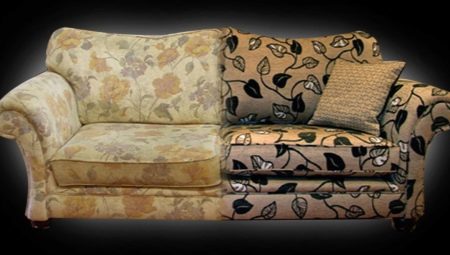Intensive operation is the enemy of furniture. Even the highest quality furniture loses its characteristics over time: the case wears out, the upholstery breaks, important details are deformed. The easiest way is to throw out a sofa or chair, buy a new one - and that's the end. But it’s more interesting (and more practical) to preserve what can still be used for more than one year. And not just to preserve, but to restore, giving the furniture a new life.
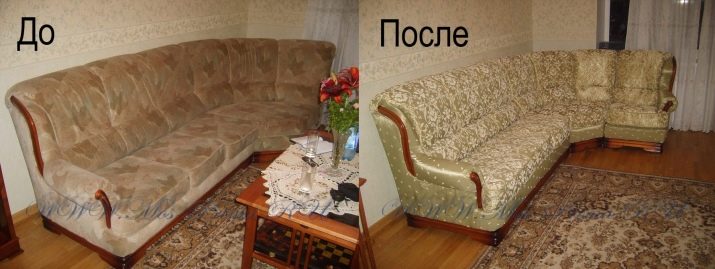
Features of self-restoration
Restoring an old sofa can be done in different ways. Some pieces of furniture need partial restoration, many require a complete restoration. And although almost everyone has the opportunity to seek help from professional restorers, more and more people, armed with their own knowledge, a good tool and tips from the Internet, take on their own hands.

Updating an old sofa may require certain types of work.
- Cleaning the covers. If the sofa is not very large, you can handle it yourself. But it is worth doing this only if the upholstery is still in good condition, and it makes sense to clean it. In many cases, alas, you need to completely change the upholstery. For cleaning, it is enough to find a suitable product and purchase new furniture accessories. Wash the upholstery in the usual way - most upholstery samples are not suitable for washing, the fabric is crawling or shrinking.
- Full replacement cover. This option is expensive, but the result is fundamentally different. It is possible that removing the upholstery, you will see that time “killed” and the spring, that the chipboard is also broken. Restoration will be complicated, but this is a necessary measure.To replace the upholstery, use modern durable fabrics - leatherette (many options), nubuck. Faux leather is the most preferred option.
- Furniture constricts. And this is not just a change of upholstery, but a series of more serious operations: repair of the frame itself, replacement of the filler, replacement of locks and springs. This process is the most time consuming.
When the front of work is clear, you need to look at what materials and tools you have and which ones you will have to buy.
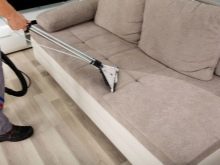
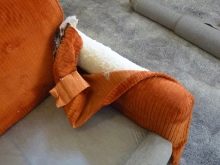
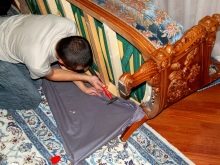
Tools and materials
Separately, everything necessary for the banner is selected, a different set will be required for sewing a new cover.
For hauling you will need:
- screwdrivers, pliers - with them you will pull out the old staples;
- a set of keys for handling nuts and bolts;
- roulette;
- construction stapler (pneumatic is also suitable);
- staples - their size depends on the density of the material with which you will work;
- garbage bags.
To stitch a new case, you need to purchase upholstery fabric and optionally lining fabric.
You will need tailor's scissors, reinforced threads, crayons for marking, a ruler, paper for patterns.
And even the sewing machine itself can not do.



How to recover?
Restoring an old sofa with your own hands at home is a process that requires a comfortable working space for the master. If you are engaged in the restoration of the Soviet sofa, most likely you will have to change a lot. The old sofa has even more problems dictated by time. because From a financial point of view, acquiring a new sofa may be a more sensible action.
But if it comes to assembling furniture that has value, is family or rare, if you want to update, for example, a Stalinist sofa, the work is worth it. And even at home, and not in a special room, you can achieve success. This also applies to the corner sofa, and the sofa bench, and wooden. You can solve this problem yourself, but using a specific algorithm.
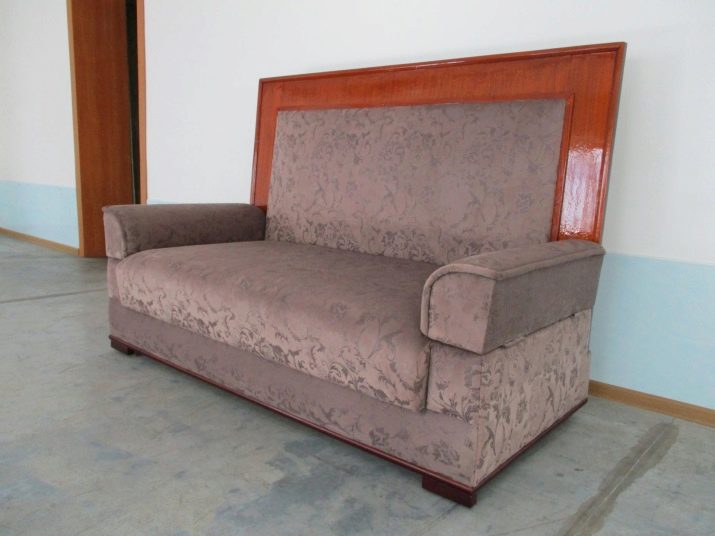
Disassembly
Furniture restoration always begins with disassembly. This means that you need to unscrew and remove the locks, unfasten the old brackets that previously mounted the upholstery on the frame. At this moment, keep nearby garbage bags, so as not to waste time later on cleaning the room.
In fact, this stage is also a kind of diagnostic. Having examined the furniture structure, you will see that inside the sofa, how healthy is it, what needs to be changed, and what is optional.
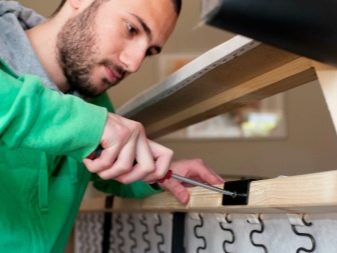
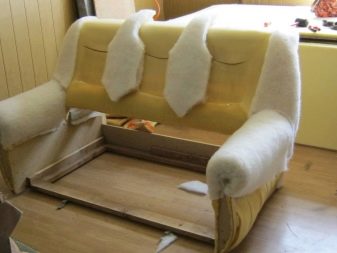
Replacing old items
This is the main and rather laborious stage. Directly repair with replacement of old elements. If, for example, you see cracks on the frame beams, this cannot be ignored. You find solid beams and put them in place of the deformed ones. In this case, the sofa will serve for a long time, and it will no longer be squeezed.
If you notice other broken parts, they should be repaired or immediately put in new ones, having cut them out with a jigsaw.
And to fix new parts, take nails or a pneumatic stapler. If the spring block has become unusable, it also needs to be replaced with a new, durable one suitable for this model of sofa.
Replacement of the filler is also required. Usually, foam rubber is taken for this purpose. Delete the old one, carefully insert the new one in its place. Next is to do the replacement of locks.
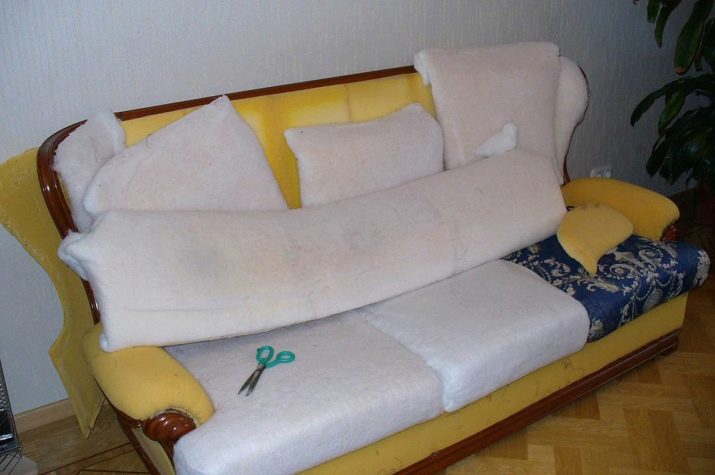
Padding or replacing upholstery
This can be said the most creative stage of work. Before you get a new fabric, measure the old (already removed by this time). Add to it a margin of at least 50 cm, so you will leave enough space for inversion. Purchased material should be cut into individual elements. Let the old upholstery become a pattern, just shake it out first.
Remember to leave allowances. If you sew a case yourself, you will need a good sewing machine with an overlock. If not, you will have to consult a specialist. Before fastening, stitched covers necessarily need fitting. It is possible that at this stage it turns out that they will have to be cut or sutured.The upholstery is fixed to the frame using a furniture stapler with staples. The standard spacing between staples is 40-45 cm.
Remember, for example, that Striped fabric should be cut in one direction.. Of course, the cost of the fabric will increase, and this should be known before buying.
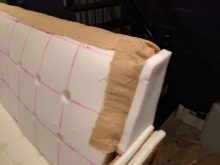
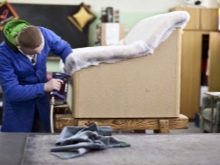

Dressing
Sometimes, just for the sake of a new “image”, people take to restore the sofa. This is especially true of Soviet sofas, strong, ready to serve for a long time, but visually do not fit into the modern interior.
We offer several ideas for decorating a sofa.
- If the sofa has wooden armrests, they can be repainted. How to repaint it is possible and the entire wooden part of the sofa. If for some reason the former color does not suit you, take the one that your interior needs. The white version is often the perfect solution. If you do not want radical changes, it is enough to take a stain and slightly change only the shade of the part.
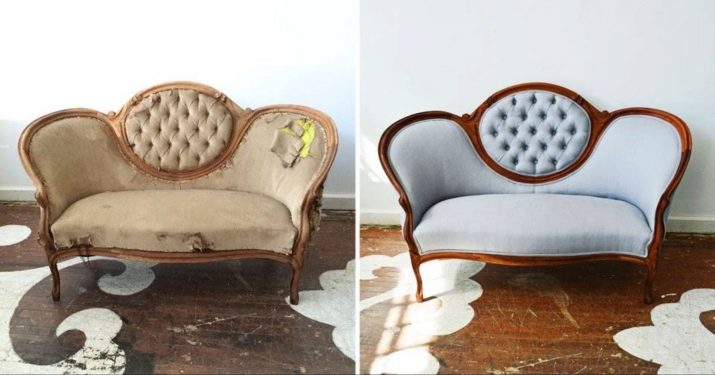
- Cushions - option lying on the surface. They can be made from the same fabric that represents the new upholstery. You can choose a fabric that is in harmony with the upholstery.
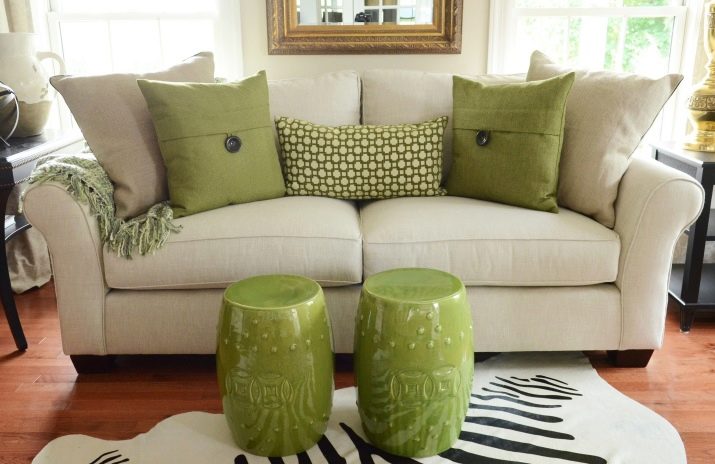
- Covers on armrests and a toy on a sofa. Another interesting option: for example, the armrests are made of another material that is different from the base. It so happens that the body is studded with jacquard, and the armrests are leatherette. Leatherette is prone to rapid abrasion, and to protect it from such consequences, you can sew covers on the armrests. They can be replaceable - for example, seasonal or holiday. And in order to find a “company” for them, you can sew an interior toy or a pillow toy from the same fabric.
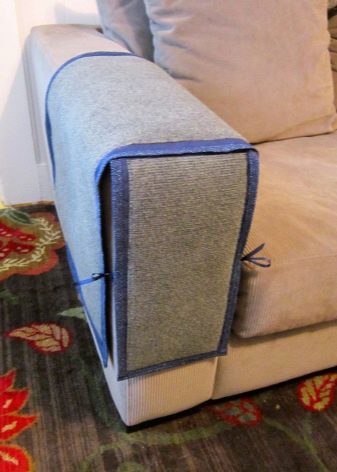
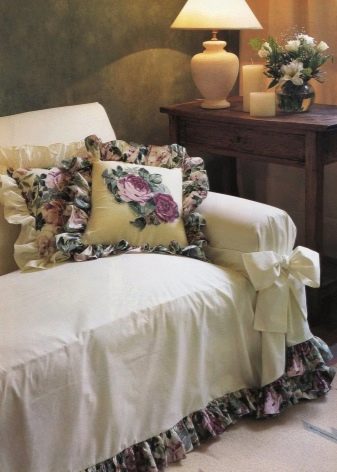
- Cloak. Openwork knitted wraps - vintage sofa design. They can not be compared with the same type of plaids and bedspreads. If the model of the sofa is harmonious with such a decor, you can knit the cloak yourself or buy from artisans. Furniture that demonstrates the style of a particular era is worthy of design in the same aesthetics.
Very often after the restoration of the sofa, I want further changes. Renovated furniture requires a change in the environment where it goes. The easiest way to organize a harmonious ally on the old sofa is to remake the old coffee table. When the furniture is a set, it looks more convincing in the interior.
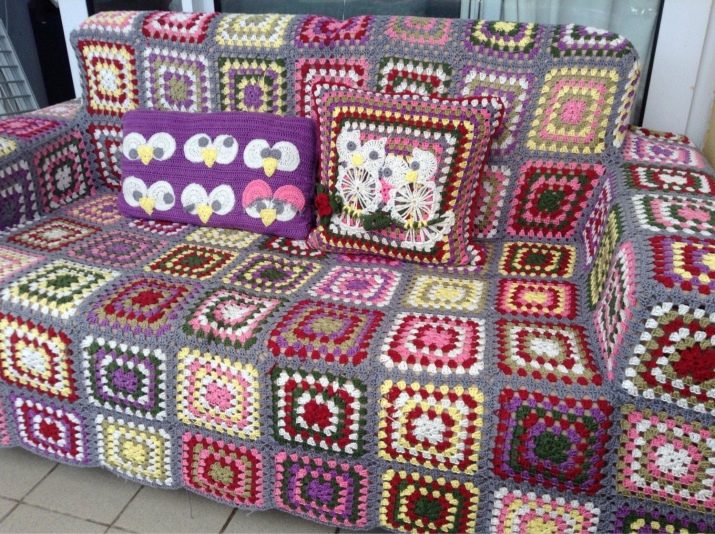
There is another type of decoration - when the restoration of furniture is minimal, it involves only minor manipulations. For example, a corner is still frayed in a fully operational sofa. In this case, art patches help out. It can be knitted elements, which openwork mesh, pattern pass through the furniture - it seems that it could look so from the very beginning.
Sometimes the legs are replaced in the sofa: new ones are put in place of the old wooden ones, or even the wheels are screwed instead of the legs, thanks to which the sofa becomes mobile.

Restoration is an interesting, time-consuming process and, as many masters admit, addictive. Have a good start!
See below for more details.
